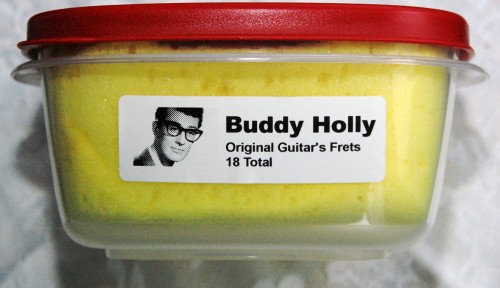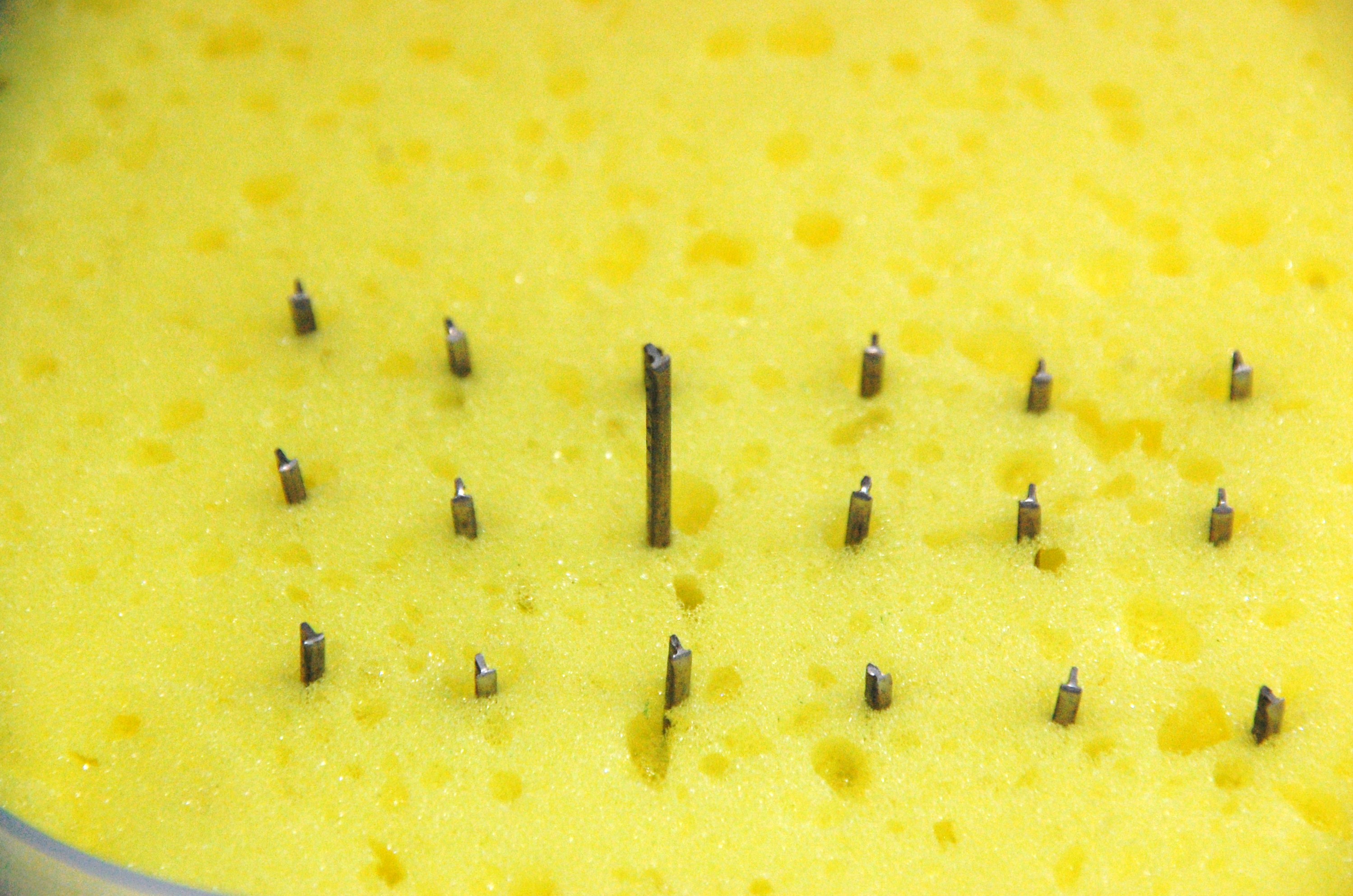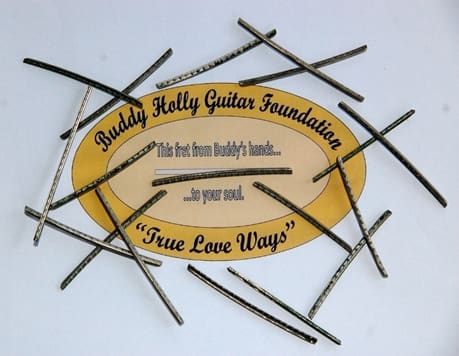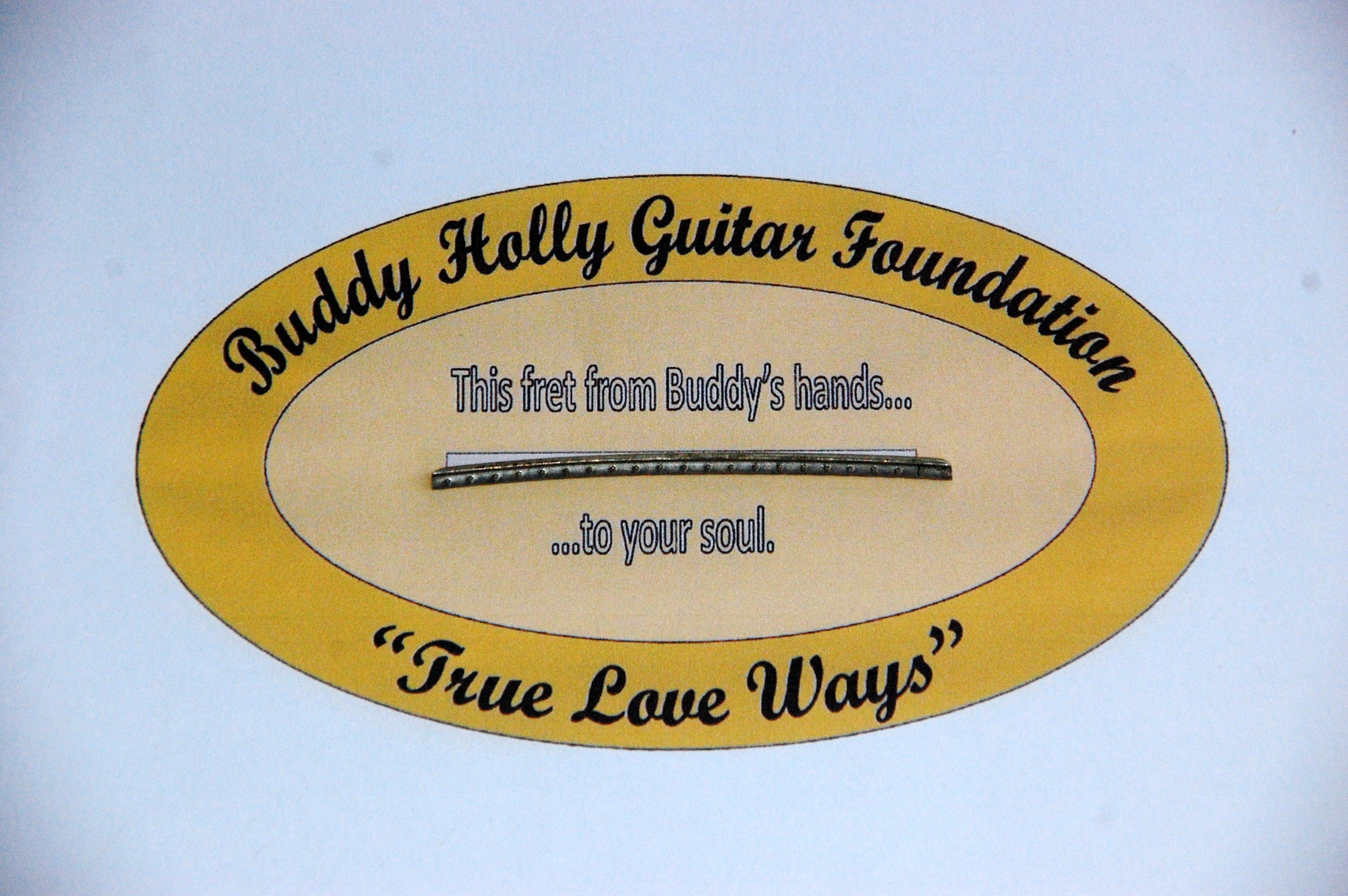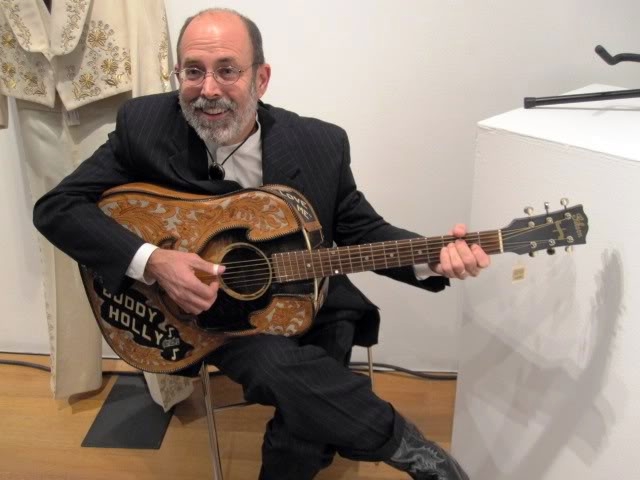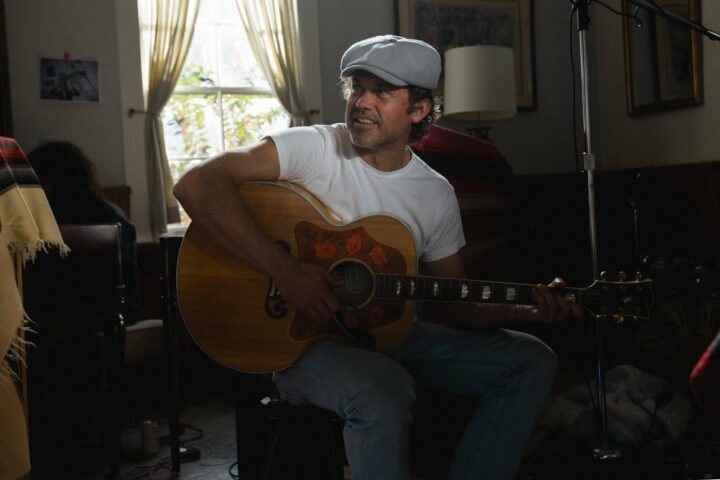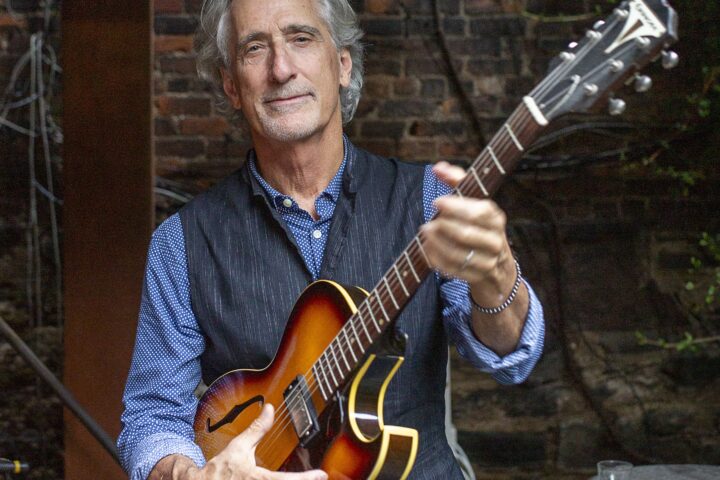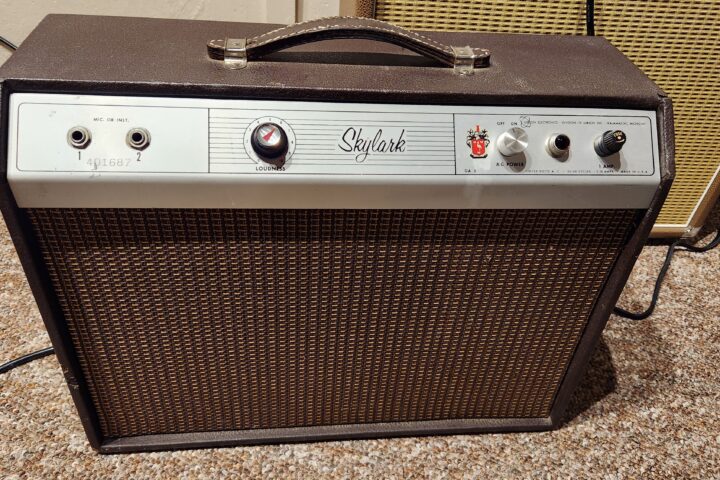A couple of years ago, Christie’s auction house offered up Buddy Holly’s 1942 Gibson J-45. Well, Gibson began building the guitar in 1942, but shipped it in 1943. The Christie’s folks gave me a 90-minute private audience with the guitar and a few days later, at the auction house’s “Texas Style BBQ” the night before the sale (really, with the incredible Li’l Mo and the Monicats playing country music), I had my wife snap my picture while I held the guitar.
Playing the guitar was a heady experience. It was Buddy’s sole acoustic guitar for most of his song writing days. Rockabilly Hall-of-Famer Sonny West, Holly’s friend and composer of two of his early hits, “Rave On” and “Oh Boy,” recently told me that he watched Holly write the classics “It’s So Easy,” “Heartbeat,” “Love’s Made a Fool of You,” and “Wishing” on the guitar. But, it wasn’t a complete experience. You see, when, in a case of life imitating art, actor Gary Busey bought the guitar after starring in “The Buddy Holly Story,” he took it to luthier Rick Turner for repair work, including a re-fret. So, I’d handled the guitar, but not its frets.
Yesterday, my Buddy experience became complete. The doorbell rang and standing there with a Big Brown truck in the background was a smiling courier who handed me a small box. Inside, encased in foam, were 18 of the original frets (1 has been lost to the ravages of time). They are bound for the 18 guitars being built by the Buddy Holly Guitar Foundation.
Yeah, I handled them all when I took them out to pose them on the mock-up of the fret plaque I designed. These plaques will be made of ebony, cherry, and mahogany, will be home to one fret for each guitar, and will be placed inside each guitar where a label would usually reside.
I’m looking forward to the coming months when I send these frets and their guitars off to the Foundation artists. Each artist receives the guitar for a two-year term, renewable by the agreement of the artist and the Foundation’s board. When it’s time to move the guitar to another artist, the current custodial artist will nominate a successor. The guitars will never be sold, never retire to a museum, never stop making music. For eternity, the guitars and those 18, gleaming pieces of nickel silver will spread the joy of song, illuminate Buddy’s legacy, and raise money for school music programs around the world.
They’ll be out there, Raving On.
